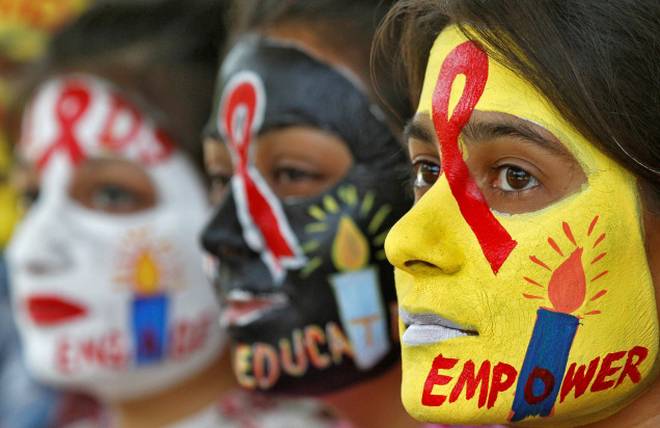Epidemics end, as smallpox and even Ebola show. The story that could be written in 2030 is that roughly 50 years after it began, AIDS is over.
But epidemics don’t end by themselves. The exponential growth of infection has to be matched by persistent effort to beat it back. To be able to meet the 2030 goal that world leaders adopted last year, a concerted push is needed in the next three years. The “90-90-90” plan for 2020 calls for 90% of HIV-positive people to know their status; 90% of those who know their status to receive treatment; and 90% of people receiving treatment to show suppression of the virus.
Right now, we’re 50-50 at best. Of the 37 million people estimated to be living with HIV, half know their status. Slightly less than half, or 18 million, are on antiretroviral therapy, which by lowering viral load helps prevent further infections as well. Rather than falling, the number of people newly infected with HIV is still rising.
Progress can be tracked. “During the last five years we’ve been able to double the number of people on treatment,” says Michel Sidibé, executive director of UNAIDS, which is tasked with coordinating the global effort. That means countries are not overwhelmed, can define a strategy, reach people and make sure that treatment is available, he says. In other words, we know what works.
The global plan is not separate from the need for a major uplift of rural and urban, and public and private, health clinics around the world. Sustainable Development Goal No. 3 (including: “By 2030, end the epidemics of AIDS, tuberculosis, malaria, and neglected tropical diseases and combat hepatitis, water-borne diseases, and other communicable diseases”) also includes targets for maternal and child health, chronic disease-prevention and other challenges. Sidibé says health systems need more boots on the ground—a million more, to be specific—delivering HIV/AIDS-related health services.
Ending an epidemic is one of the most cost-effective investments around (that’s a longer post), but 13 years before the deadline, funding is lagging. Public and private investors that want to tally a big win in 2030 are scrambling to finance the 2020 plan now. Bright spots: India and China, having mobilized around their own AIDS crises, are ready to move from recipients to donors in the global effort. It’s too late to get in early on ending AIDS, but it’s not too late to get in late.
This post originally appeared in ImpactAlpha’s daily newsletter. Get The Brief.
Photo credit: Reuters











